The monarchs of France have played an integral role in the history of the country, from the Middle Ages to modern times. Starting with Hugh Capet in 987, and including famous rulers such as Louis XIV and Napoleon Bonaparte, monarchs have shaped French culture and politics.
This article will explore the evolution of monarchy in France, from its start under the Capetian dynasty, through the Hundred Years’ War, the Renaissance, and the rule of Louis XIV, to its ultimate fall during the French Revolution. We will then look at efforts to restore the monarchy under Charles X and Napoleon III, before finally discussing its end in France in 1870. Through this overview of French monarchs, we can better understand their impact on history and politics in France.
The Rise of the Capetian Dynasty
The rise of the Capetian Dynasty marked a significant turning point in the history of monarchy in France. In the 10th century, Hugh Capet, Count of Paris, established the dynasty, which initially held limited power within the region.
However, through strategic marriages, political maneuvering, and the consolidation of territories, the Capetians gradually expanded their authority, solidifying the monarchy’s control over the kingdom of France. Over the course of several generations, the Capetian Dynasty laid the foundation for a centralized monarchy, setting the stage for the future development of French monarchy and its role in shaping the nation.
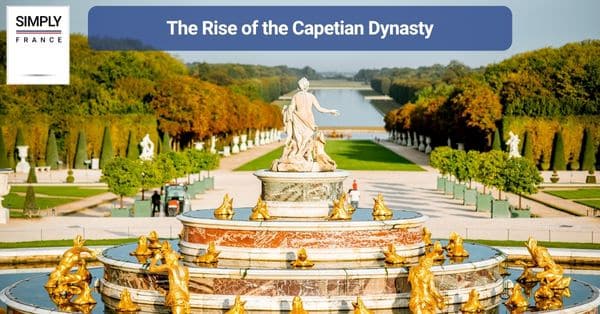
The Hundred Years’ War
The Hundred Years’ War was a prolonged and transformative conflict that spanned from 1337 to 1453 between the Kingdom of France and the Kingdom of England. Fueled by territorial disputes, dynastic rivalries, and economic tensions, the war had a profound impact on both nations. It witnessed a series of military campaigns, notable battles, and shifting alliances.
The war not only tested the military prowess of both kingdoms but also had far-reaching consequences, including the emergence of national identities, the development of military strategies, and the strengthening of centralized monarchies. Ultimately, the Hundred Years’ War played a significant role in shaping the political, social, and cultural landscapes of France and England, leaving a lasting legacy on European history.
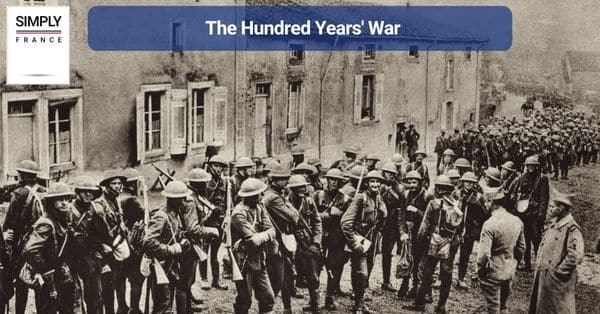
The Renaissance and the French Monarchy
The Renaissance era brought about a transformative influence on the French monarchy. Embracing the ideals of the Italian Renaissance, the monarchy became a patron of the arts and fostered intellectual exchange. Monarchs invested in architectural projects and commissioned renowned artists, showcasing the grandeur of the period.
Humanist ideas shaped their governance, emphasizing their authority and portraying themselves as enlightened rulers. The Renaissance not only left a lasting impact on the cultural and artistic landscape of France but also influenced the monarchy’s governance and societal dynamics, creating a significant chapter in French history.

The Absolute Monarchy of Louis XIV
Louis XIV, also known as the Sun King, established an era of absolute monarchy in France that left an indelible mark on its history. Reigning from 1643 to 1715, Louis XIV centralized power in his own hands, symbolizing the divine authority of the monarchy. He meticulously controlled every aspect of French life, promoting a highly centralized government and a rigid social hierarchy.
Through his lavish court at Versailles, Louis XIV projected grandeur and opulence, solidifying France’s position as a cultural and political powerhouse. His reign witnessed military victories, economic growth, and significant cultural advancements, making him one of the most influential and iconic monarchs in French history.
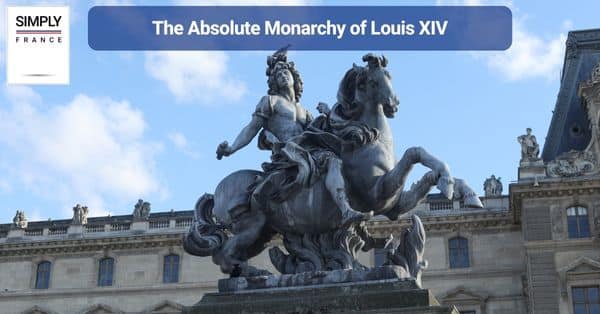
The French Revolution and the End of the Monarchy
The French Revolution was a monumental period of social and political upheaval in France, characterized by radical changes and the ultimate downfall of the monarchy. This transformative era, which lasted from 1789 to 1799, witnessed the rise of revolutionary ideals, popular uprisings, and the dismantling of the old order. The monarchy, symbolized by King Louis XVI and the Bourbon dynasty, faced mounting discontent and resentment from the masses, leading to its eventual demise and the establishment of a new republican government.
Causes and Pre-Revolutionary Tensions
Socioeconomic inequality, political corruption, and financial crisis were among the key factors that fueled discontent among the French population. The burden of taxation fell heavily on the lower classes, while the nobility and clergy enjoyed privileged positions. Enlightenment ideas and the spread of revolutionary fervor further heightened tensions, questioning the legitimacy and authority of the monarchy.
The Storming of the Bastille and the Revolutionary Spirit
The storming of the Bastille on July 14, 1789, marked a turning point in the revolution. The attack on this symbol of royal authority by revolutionaries seeking weapons and ammunition ignited a wave of popular uprisings across the country. The revolutionary spirit spread rapidly, leading to the formation of revolutionary factions and the demand for political and social change.
The National Assembly and the End of Monarchy
The National Assembly, a representative body formed by the Third Estate (commoners), played a significant role in challenging the monarchy’s power. On August 10, 1792, the monarchy was officially abolished, and Louis XVI was imprisoned. The radical phase of the revolution witnessed the execution of the king and the establishment of the First French Republic in 1792.
The Reign of Terror and the Thermidorian Reaction
The Reign of Terror, led by the Committee of Public Safety, characterized by mass executions and repression, emerged as a response to internal and external threats to the revolution. However, public sentiment turned against the excessive violence, leading to the Thermidorian Reaction. In 1794, Maximilien Robespierre, a key figure in the Reign of Terror, was executed, marking a shift towards a more moderate phase of the revolution.
The Rise of Napoleon Bonaparte
The instability following the revolution paved the way for the rise of Napoleon Bonaparte. As a military general, Napoleon seized power in a coup d’état in 1799, effectively ending the revolutionary period and establishing the Consulate, which would later evolve into the Napoleonic Empire.
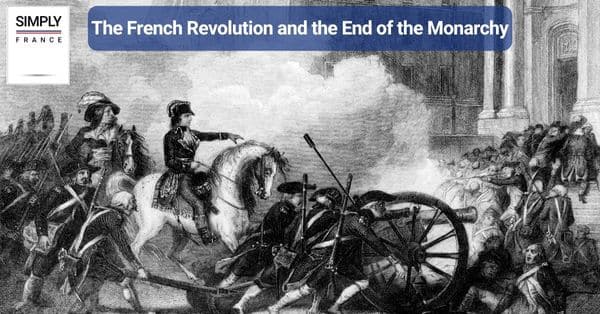
The Restoration of the Monarchy
The Restoration of the Monarchy in France refers to the period when the Bourbon dynasty was reinstated after the fall of Napoleon Bonaparte. This period, spanning from 1814 to 1830, marked a return to traditional monarchical rule in France after the tumultuous years of the French Revolution and the Napoleonic era. The Restoration brought with it a desire for stability and a longing for the familiar institutions of the past.
Post-Napoleonic Europe and the Congress of Vienna
In the aftermath of Napoleon’s defeat, European leaders convened at the Congress of Vienna in 1814-1815 to restore order and establish a new balance of power. The restoration of legitimate monarchies was one of the key goals of the Congress, aiming to preserve stability and maintain the traditional ruling houses.
Louis XVIII and the Bourbon Restoration
Louis XVIII, brother of Louis XVI who was executed during the revolution, was chosen as the king to lead the restored Bourbon monarchy. His reign from 1814 to 1824 was marked by attempts to reconcile the past with the present. He issued the Charter of 1814, which guaranteed certain civil liberties and laid the groundwork for a constitutional monarchy.
Ultra-Royalists and Political Challenges
During the Restoration, France faced political challenges due to a divided society. The Ultra-Royalists, a faction advocating for a return to absolute monarchy and the suppression of revolutionary ideals, exerted significant influence on the king. This led to tensions with more liberal elements in society, who desired a greater degree of political freedom and representation.
The July Revolution and the End of the Bourbon Restoration
The Bourbon Restoration came to an end with the July Revolution of 1830. Charles X, the successor of Louis XVIII, attempted to assert his authority and limit civil liberties through the July Ordinances. However, this sparked widespread popular resistance and led to violent clashes in the streets of Paris. Charles X abdicated, and the July Monarchy, under Louis-Philippe, was established.
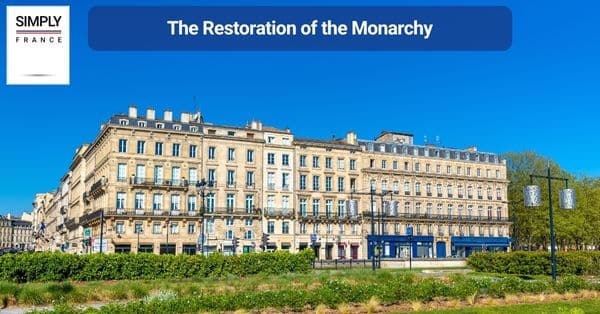
The July Monarchy
The July Monarchy, established in France from 1830 to 1848, marked a transitional phase in the country’s political landscape. Under the rule of King Louis-Philippe, the July Monarchy emerged as a constitutional monarchy, balancing elements of liberal reform with the preservation of monarchical authority.
The period was characterized by a focus on economic development, industrialization, and expanding opportunities for the middle class. However, social tensions and political discontent grew, leading to the February Revolution of 1848, which brought an end to the July Monarchy and paved the way for the establishment of the Second French Republic.
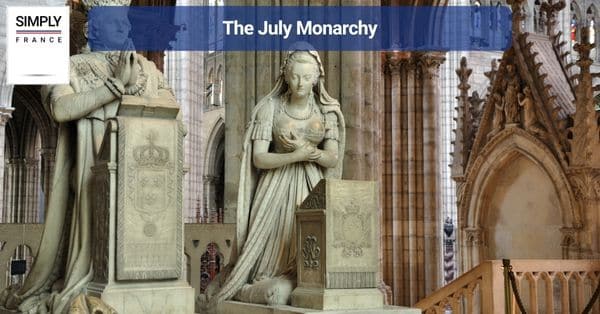
The Second Empire
The Second Empire in France, spanning from 1852 to 1870, marked a period of authoritarian rule under Napoleon III. Established through a coup d’état, the Second Empire aimed to revive the glory of the Napoleonic era while consolidating power in the hands of the emperor. Napoleon III implemented significant reforms, including modernization projects, urban planning, and economic development.
The period witnessed industrialization, the expansion of French colonies, and a flourishing of arts and culture. However, increasing political opposition, military setbacks, and economic crises ultimately led to the downfall of the Second Empire during the Franco-Prussian War, leading to the establishment of the Third Republic in France.
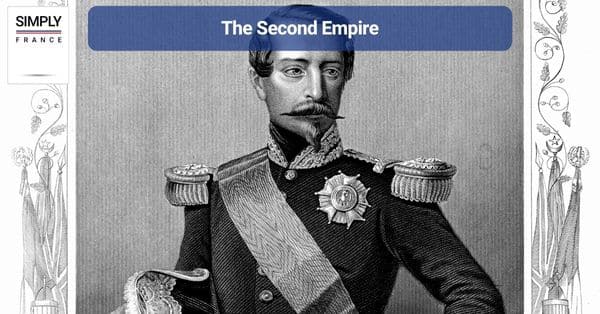
The Third Republic
The Third Republic in France, established in 1870 and lasting until 1940, was a significant chapter in the country’s political history. Born out of the ashes of the Franco-Prussian War and the fall of the Second Empire, the Third Republic sought to establish a stable and democratic government. It faced numerous challenges, including social unrest, political divisions, and the impact of two world wars.
Despite its turbulent beginnings, the Third Republic achieved notable accomplishments, such as the separation of church and state, educational reforms, and the development of modern infrastructure. However, political instability, economic hardships, and the rise of extremist movements ultimately led to its demise with the fall of France during World War II.
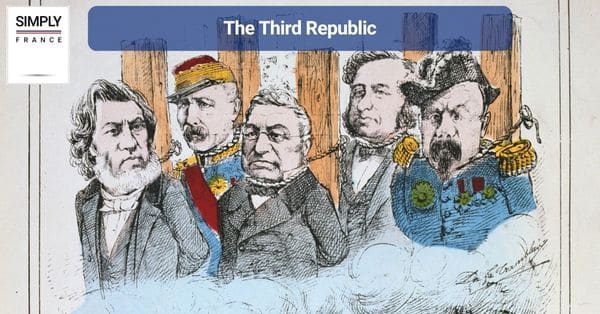
The Fall of the Monarchy
The fall of the monarchy in France represents a pivotal moment in history, characterized by the demise of centuries-old royal rule. This significant event occurred during the French Revolution, a period of intense social and political upheaval.
The fall of the monarchy was marked by the execution of King Louis XVI in 1793, symbolizing the end of divine right and the birth of a new era of republican ideals. The revolutionaries’ rejection of absolute monarchical power and their pursuit of liberty, equality, and fraternity set the stage for the establishment of a new order in France, fundamentally reshaping the nation’s political landscape and inspiring transformative movements worldwide.
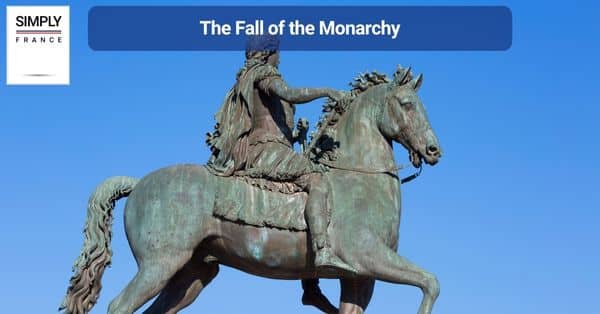
In conclusion
The fall of the monarchy in France was a significant event that has had an enduring impact on its history and legacy. The Hundred Years’ War, the Renaissance period, Louis XIV’s absolute monarchy, and the French Revolution were all influential events that contributed to this momentous shift away from centuries-old royal rule.
With the establishment of a new republican government, France entered a new era of social and political transformation. The ideals of freedom, equality, and fraternity inspired by the revolution have shaped our understanding of democracy and human rights today. The fall of the monarchy marked a pivotal moment in French history that continues to reverberate through time.


